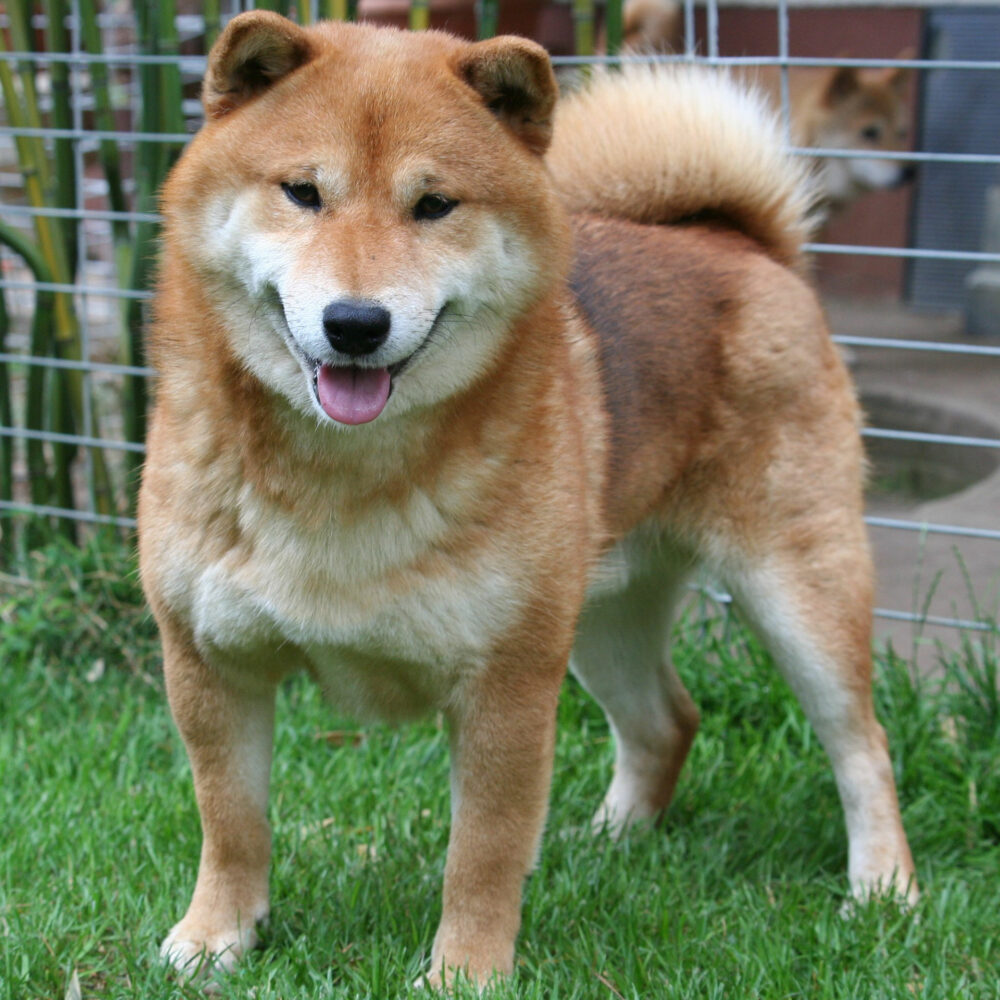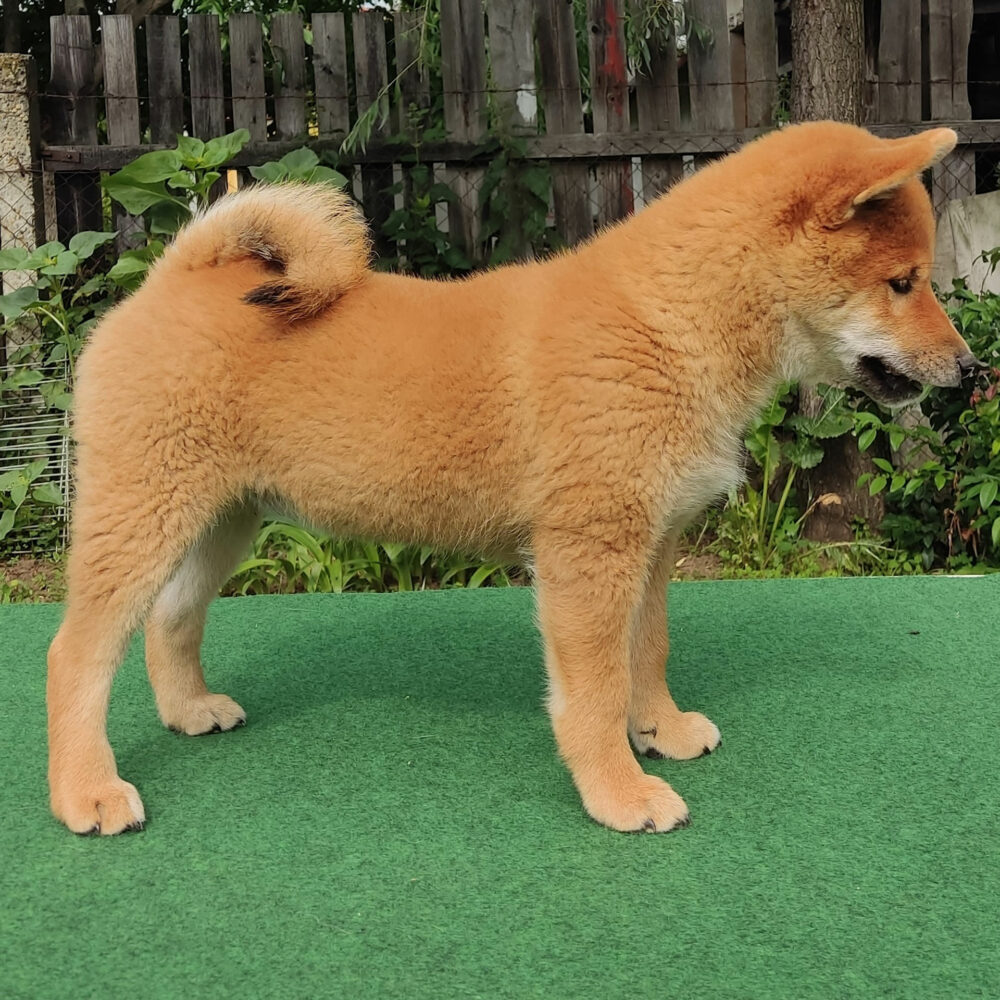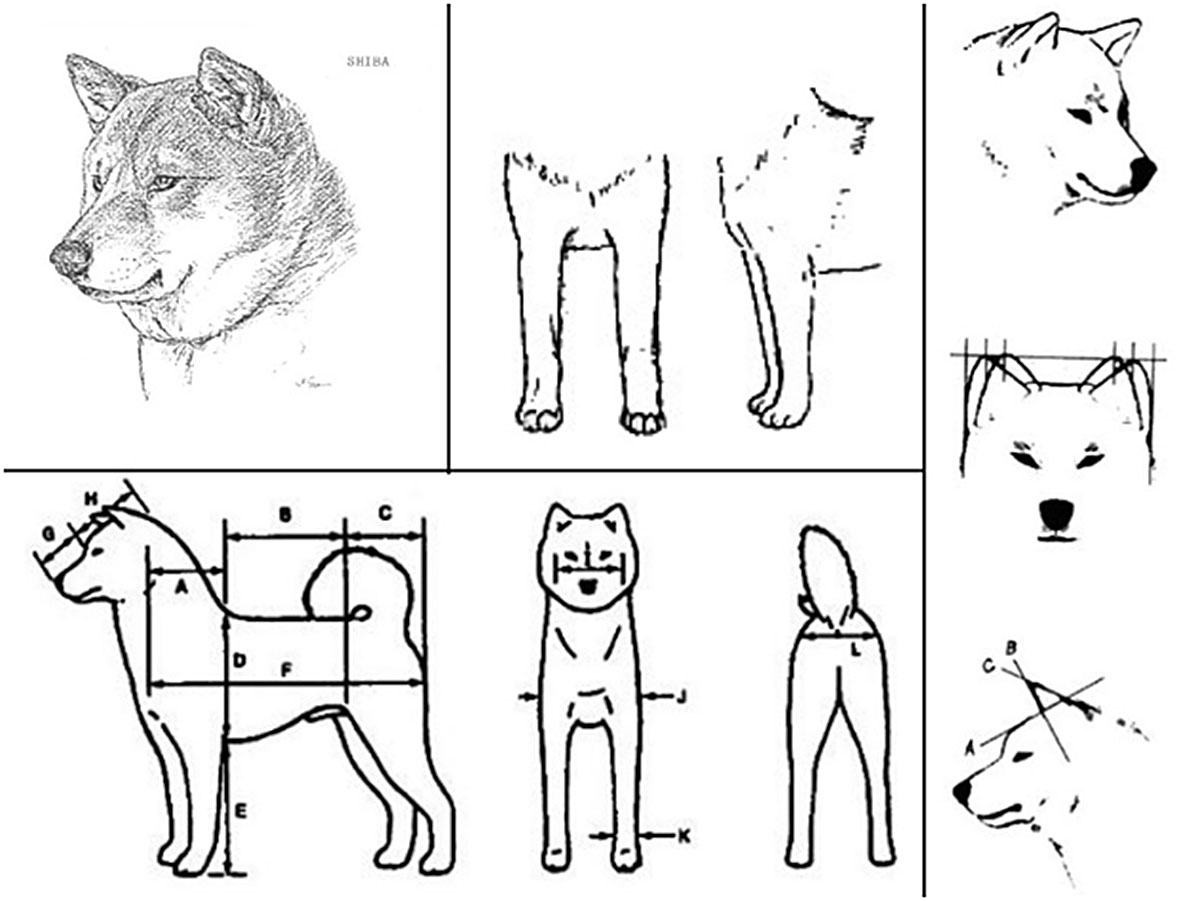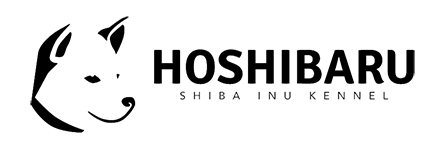Shiba Inu
Standard setting country: Japan.
Category: Hunting and companion dog.
F.C.I. classification: Class V (Spitz and ancient type dogs), Group 5: Asian Spitz and related breeds.
It does not require a work test.
Its original task
Nowadays, they are kept as companion dogs in different countries of the world. The breed is very popular. It attracts attention with its attractive appearance and lively temperament.

General appearance
- The Japanese pay special attention to the Shiba’s character traits. For Japanese breeders and judges, the dry bureaucratic standard is less important than its presentation.
- The interpretation and commentary of the standard is as important to them as the textual standard itself and is considered an unconditional part in Japan.
This means that the Japanese description of the breed, which is valid for judges, breaks down into a reflection on the official standard and its presentation.
Appearance
Bitches always have finer bones, less strong muscles and a thinner tail. The expression of the eyes and the general posture of the body should be kind and gentle. Regardless of the height at the withers, even a small male dog must develop strong muscles, and a large female dog must not make a rough impression or appear masculine.
In general, the Shiba is well-proportioned, yet powerfully built, with strong bones. It has beautiful, well-developed, well-defined musculature in both sexes.

Body dimensions and their proportions
Head: The head of the Shiba is broad and the muzzle is strongly developed. The stop is distinct, with a shallow furrow in the middle of its forehead. The facial part is high and pointed, the bridge of the nose is straight, and the lips are tight. Its small, triangular ears are erect and lean slightly forward. Its relatively small, triangular eyes sit far apart. His outer eyelids rise slightly upwards. The Shiba’s bite is scissor-like.
Tail and limbs
Fur
Rough to the touch, straight topcoat, soft, dense undercoat. The tail has slightly longer, standing hairs.
Due to the undercoat, the top coat on the Shiba’s body is at an angle of 45° or more to the skin surface. This undercoat allows the Shiba to easily withstand all weather conditions: rain, wind, snow and frost, but at the same time it causes great difficulties for its owner when he needs to swim.
The healthy coat in a healthy Shiba never gets wet on its own and has a great self-cleaning ability. The standard does not specify a preferred coat length, but this breed is considered fairly short-haired.
In any case, excessively long hair on any part of the body is not desirable.
FUR COLOUR
Sesame (black-tipped, reddish-brown hairs), red, black-tan. The red colour of the fur has a large palette, from light, almost cream-coloured to dark red.
Most often, the colour of the Shiba ranges from red to rust. Cream-coloured Shiba is very rare, this colour is less desirable. Sesame colour in Shiba is the colour that has a thin black tint along with the red colour of variable intensity.
The shading can be different, but first the main colour must dominate the colour of the undercoat.
Every Shiba must have a so-called with urajiro. Urajiro refers to the light-coloured surface of the fur, which is found on the inner surface of the limbs, chest, throat, around the mouth (but not the nose), above the eyes, on the belly, and on the base of the tail.
Visually, urajiro can sometimes appear whitish in colour, but it does not mean white in the strict sense of the word.
Behaviour, temperament
Since the Shiba Inu has a very strong will and can be a bit mischievous, you must always be consistent in the application of positive reinforcement training (rewards, praise), so that our four-legged friend can fit in perfectly with his family and environment.
Character: Balanced, alert, curious and cheerful breed. He rarely barks, but he can be quite attentive. It is closely tied to its owner, but at the same time it always maintains a certain degree of independence. In general, he is quite obedient, has good adaptability, is calm, quiet and careful.
Social behavior: The Shiba gets along well with other dogs. Females and males under the same roof feel good together, however individuals of both sexes can behave defiantly, especially during the estrus period. The Shiba feels good alone, it does not get bored, but it prefers a companion and company. Coexistence with cats and other pets is usually not a problem. He welcomes visitors kindly. He maintains a very good relationship with children, he is basically a lover of children, provided that they do not see him as a stuffed toy.


Ideal body proportions:
B: Midsection of torso
C: Well
D: Bust size
E: Elbow height from the floor
E+D = Height at withers
F: Body length
G: Nose length
H: The length of the top of the head
H+G = Head length
I: The width of the face
J: Chest width
Q: Coverage of the front paw joint
L: Hip width
The ideal angle of inclination of the ears
B: A straight line placed on the front line of the ear
C: A line set on the back line of the ear
